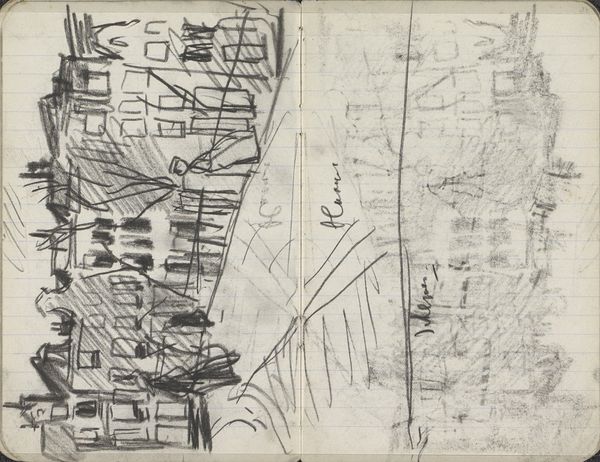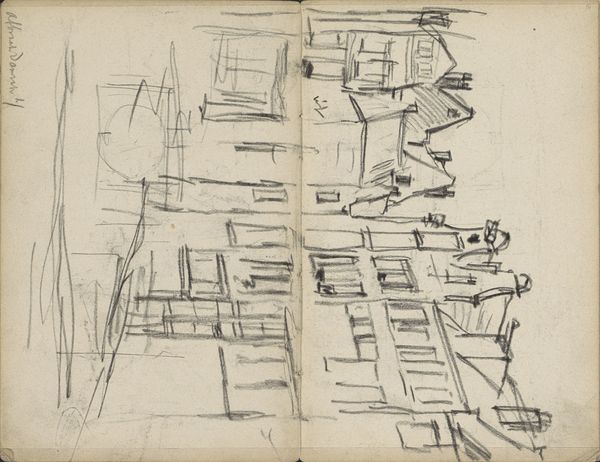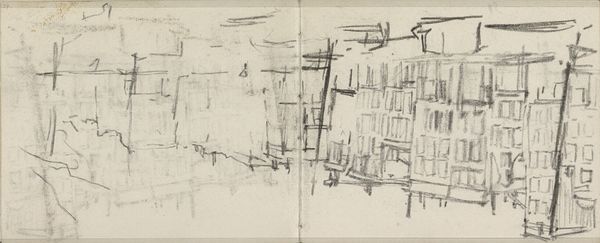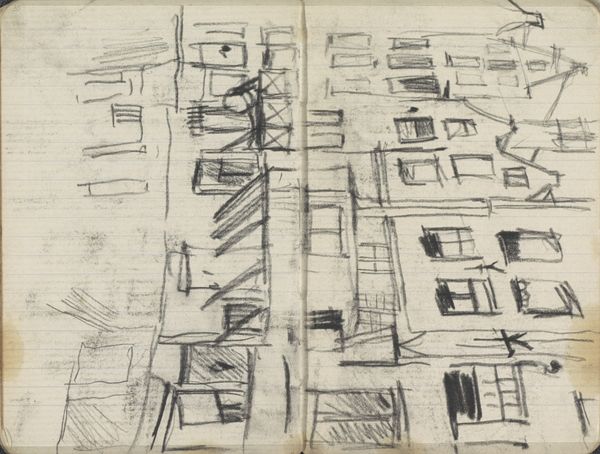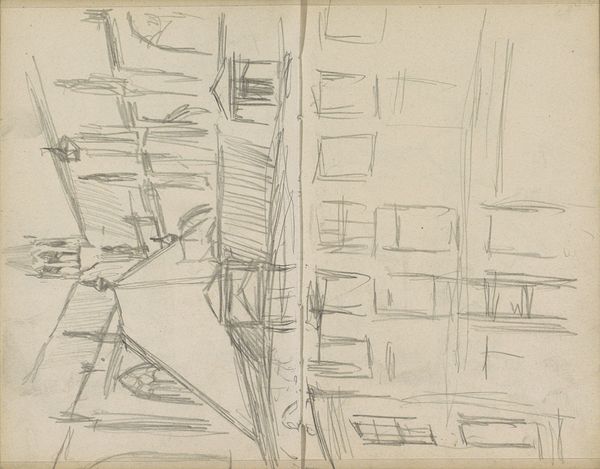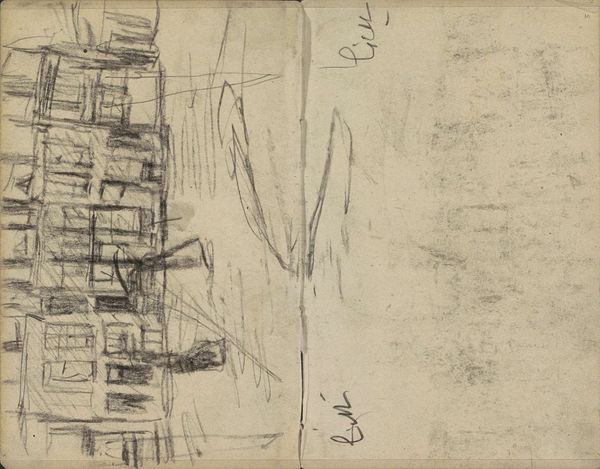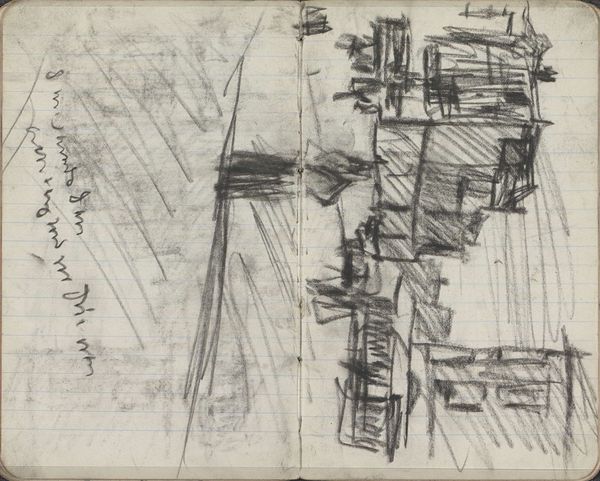
Copyright: Rijks Museum: Open Domain
Curator: Here we have "The Bridge over the Singel near Paleisstraat," a graphite and pen-and-ink drawing on paper by George Hendrik Breitner, created sometime between 1895 and 1898. It’s currently held here at the Rijksmuseum. Editor: It feels almost…furtive. Like a snatched moment captured quickly. The energy in the sketch is raw. I'm intrigued by the visible pages of the sketchbook, revealing the artistic process. What story does this incomplete view tell us? Curator: Breitner, a key figure in the Amsterdam Impressionism movement, frequently documented the city’s everyday life. This sketch is very much representative of that. Consider the social and economic changes in Amsterdam at the turn of the century. How might this fleeting glimpse of the bridge relate to the era's broader transformations? Editor: The high density depicted contrasts sharply with the sparseness of the left page, creating an imbalance. I wonder, who has access to this meticulously rendered cityscape, and who is excluded? Does this representation uphold a particular social hierarchy, and what might it exclude or marginalize? Curator: Breitner moved around the city quite a bit during this period, portraying working-class neighborhoods as well as these more formal cityscapes. I see him attempting to objectively record the city’s growth, which some criticised at the time, because he would create art out of fleeting, quickly-made snapshots. Editor: But what does "objective" really mean in this context? Even a sketch like this carries the weight of the artist’s perspective, biases and perhaps also anxieties around these intense social and political shifts. Curator: Agreed. The seeming incompleteness invites interpretation. And to me that says much about how the public views the role of art as documentation of history versus social commentary. Editor: This incomplete landscape, like all art, opens a space for ongoing critical dialogue. It allows us to delve into how the city represents the lives and conditions of those living here. Curator: A fascinating glimpse into a moment of a city’s history captured in time. Editor: Precisely. And an open invitation to scrutinize its hidden social dimensions.
Comments
No comments
Be the first to comment and join the conversation on the ultimate creative platform.
